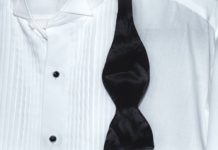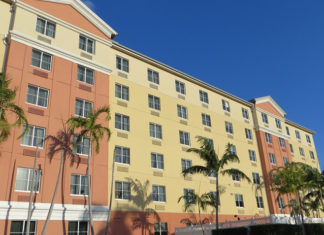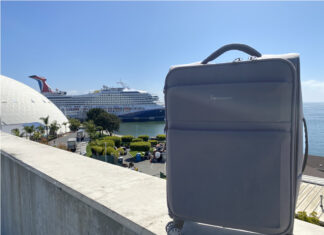From how ships are designed to how passengers are enticed to spend more money onboard, cruise lines have some clever ‘secrets’ hidden right in plain sight when it comes to your next cruise.
And if these items aren’t pointed out, then they may not even be on your radar. But when you know what to look for, these cruise secrets can make you a smarter passenger and maybe help explain some things you’ve always wondered about sailing.
Here are eight things hidden in plain sight for your next cruise…
Hidden Navigation Clues in Hallways
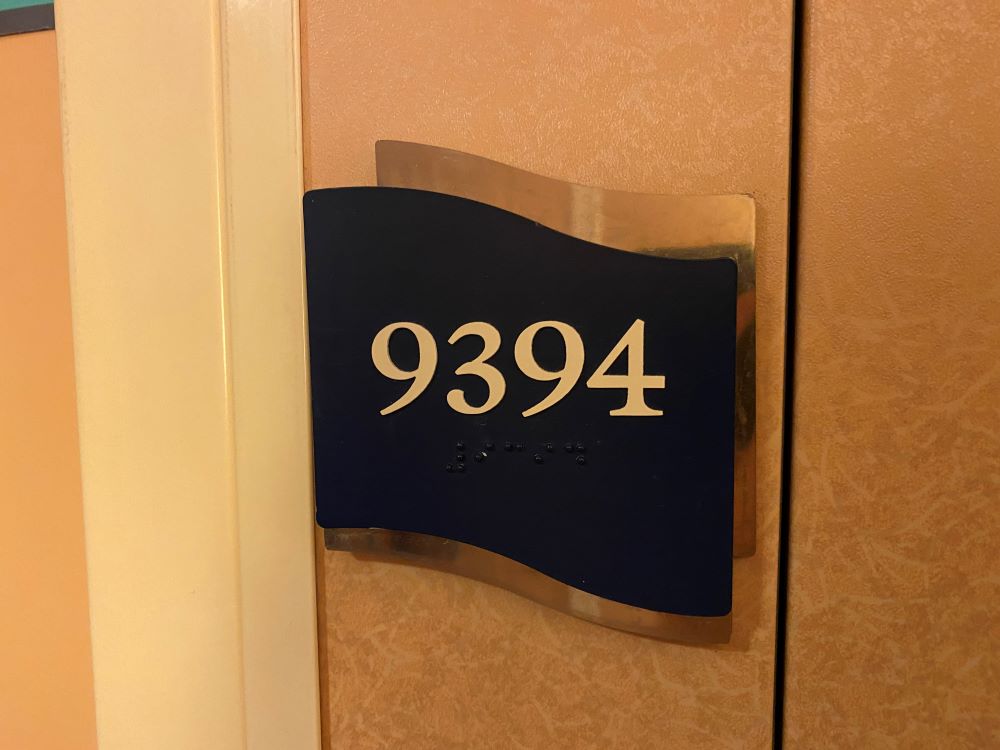
What might a ship’s carpet or a door marker be hiding? An important clue to get you around the ship.
If you ever sail on Norwegian Cruise Line, then you may notice that the carpet in the cabin hallways has tons of little fish on it. And you’ll see that they are all swimming in same direction. If you head with the fish then you are walking forward on the ship. Head against the current, and you’re going aft.
On Royal Caribbean the door markers can give you directional clues. Some may have an image of the ship, which will be pointing forward. Others have a small arrow like you see on the gas gauge of your car pointing ahead. Older ships have signs in the shape of a wave. The higher end of the wave points the way to the front of the ship.
The small features are hardly noticed by most people, but they can make a world of difference in getting around the ship to those that know to look for them.
Strange Markings on the Hull… Explained
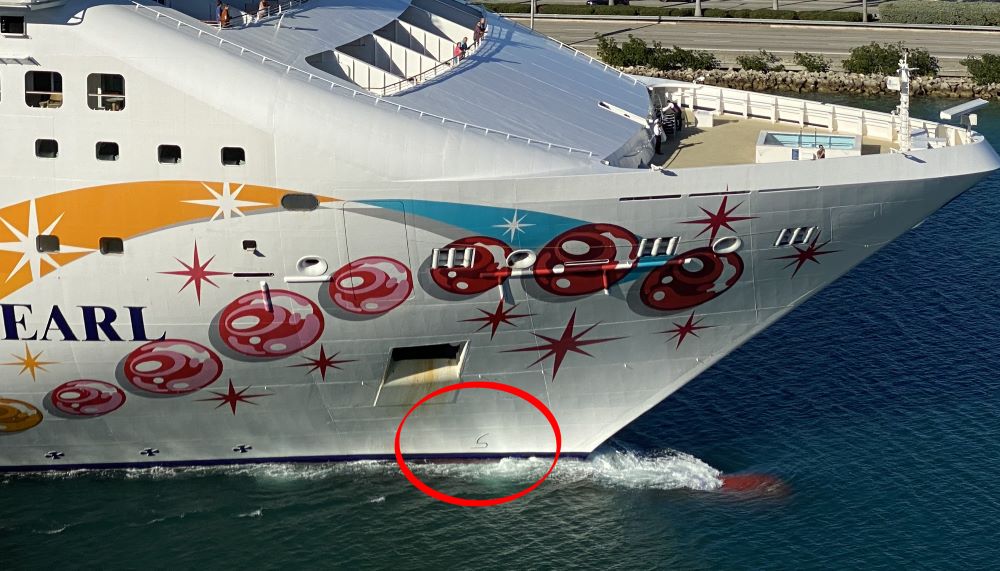
Want to know what’s hidden under the water on the ship? Look a little closer at the hull the next time you’re off the ship. What look like hieroglyphics are actually symbols telling the crew and others important information about the vessel.
Let’s start with one that you’ll see on the front of every ship. This strange marking shown above is one that tells others the ship has a bulbous bow. That means there’s a nose that sticks out in front of the ship, but it’s usually hidden under water. This design helps the ship move through the water more efficiently.
Another strange symbol that you’ll see are circles with an “x” through them, normally in groups of three. These are where thrusters are installed on the ship to help it maneuver. Unlike a propeller at the back of the ship, these thrusters sit perpendicular to the length of the ship, allowing it to push toward or away from a dock sideways.
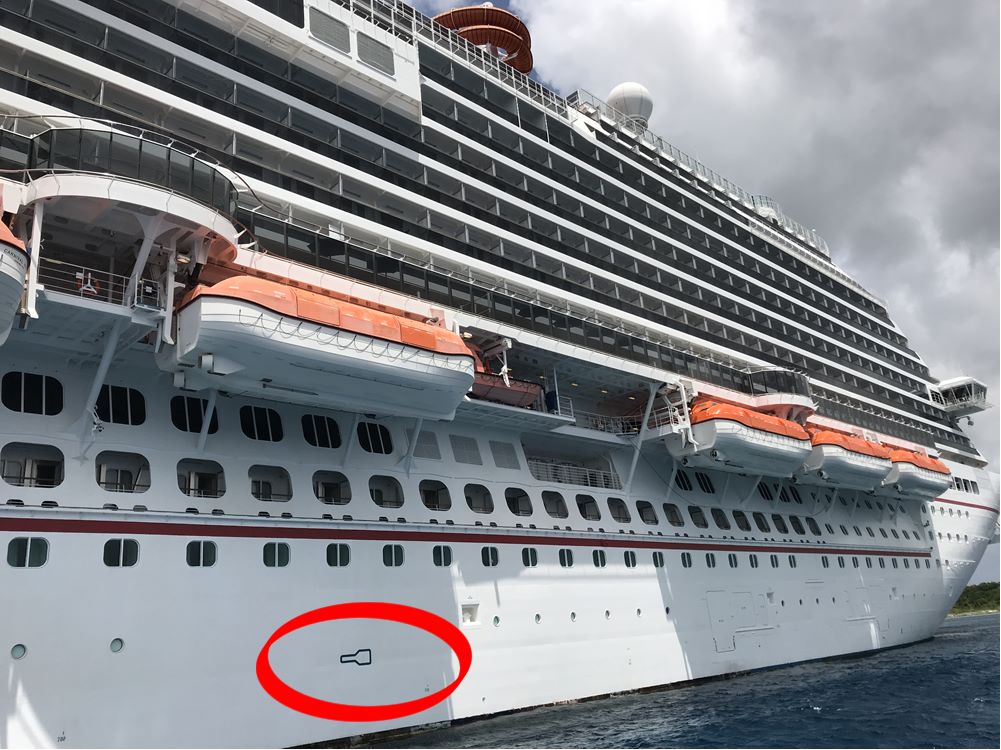
Finally, you might see a strange shape that almost looks like the outline of a key, with a larger square and then a rectangle jutting out. This marker? It’s for the ship’s stabilizers. These stabilizers jut out under the waterline like fins and help to reduce the rocking of the ocean.
The symbols help other boats know what’s going on under the water so they don’t get too close.
Clever Thinking for a Ship’s Layout
You may not realize the careful thought that went into how the ship is laid out. Cruise ships can carry upwards of 6,000 passengers. There has to be a strategy to where things are on the ship to avoid overcrowding in one spot.
For instance, what’s the most popular thing to do in the evening? Head to dinner and a show. But you’ll notice that the two are almost always on opposite ends of the ship. It makes sense that given they are large, multi-story venues that need “behind the scenes” space, to put them where there is the most area available, but it also helps to spread out crowds across the whole ship.
It’s something similar with the location of the casino. You’ll notice it’s always centrally located, and you often have to pass through it — or at least an entrance — to get from one end of the ship to the other. Giving the casino more foot traffic can lead to more players.
And there are often multiple pools on new ships, with them spread out along the length of the pool deck to help spread out the big crowds (and balance the water’s weight) from only in the center of the ship.
It all adds up as clever design that helps to make the experience much more enjoyable onboard.
You’re Sailing on One of the Largest Hotels in the World
The largest hotel in the world is the First World Hotel in Malaysia. The largest in the United States is the Venetian/Palazzo complex in Las Vegas, followed closely by the MGM Grand. Each one has about 7,000 rooms.
Cruise ships aren’t that large, but they do rank as some of the largest hotels in the world, though you rarely seen them on a list. Royal Caribbean’s Oasis-class ships — the largest cruise ships in the world — have about 2,800 staterooms.
That would place them around 35th on the list of the largest hotels on the planet and roughly the size of Paris, Treasure Island, or Bally’s in Las Vegas.
The only difference — a cruise ship has to do everything a resort does… except on the water.
Crew Areas Hide Another World
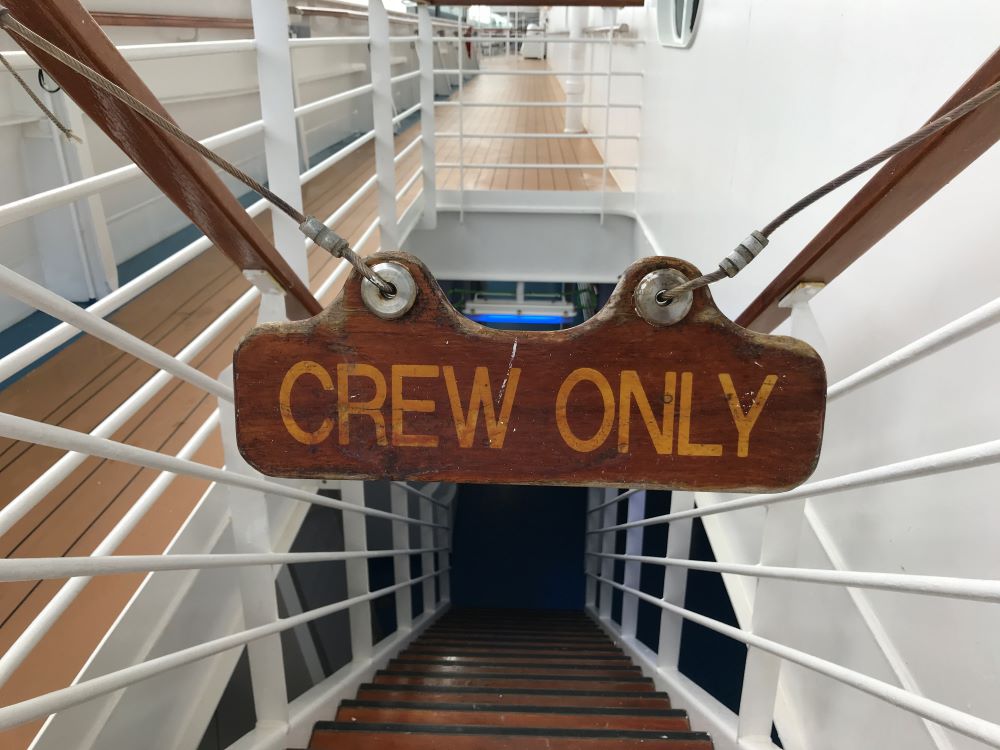
When it comes to the ship, there’s an entire other world that’s hidden from passengers that you’ll only see glimpses of as you head around the ship.
For passengers, the vast majority of the ship is open. But on the lower decks and behind certain doors, you’ll find the crew-only areas. While there are thousands of passengers, there are also thousands of crew on a modern cruise ship — all there to give you the best vacation possible.
Behind the scenes are areas where the crew lives and relaxes, including their cabins, recreational areas, and even their own pools in some cases. That’s not to mention all the “back of house” areas required to feed and entertain passengers, as well as operating an entire cruise ship, from generating electricity to actually moving the ship.
There are some tours offered for behind-the-scenes areas, but the only time most people will see them is when they are getting on and off the ship in port. The gangways are located on the lowest decks where more crew areas are located. Take a wrong turn and you might end up in crew-only areas where you aren’t supposed to be.
The Cruising Never Stops
One of the biggest secrets about cruising is one that many people don’t realize — especially if they’ve never sailed before. The cruising never stops.
When you head to your ship on cruise day, you may not know that just hours ago there were thousands of different passengers there. And in just a few short hours the ship had to be emptied of thousands of passengers, rooms readied for new guests, all the trash and waste taken off from the previous trip and then supplies loaded for the next trip.
It’s all done in a matter of hours. The ship comes in early in the morning (often docking before the sun rises), and then heads out again that afternoon or evening. It’s not the case where a ship comes in one evening, readies itself overnight and then welcomes new passengers the next day.
Instead, the break between one cruise to the next can be measured in just hours.
You’re Sailing a Foreign Vessel
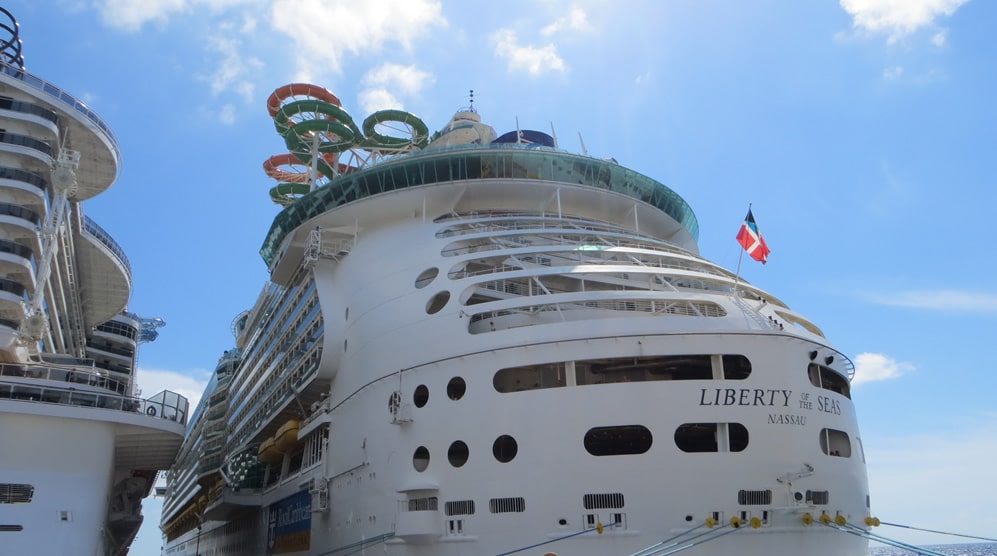
If you’re sailing from the United States, then it’s easy to think that the ship is, well, American. Almost always, however, the ship you’re sailing is actually a foreign vessel.
Since ships are international in nature, it makes sense to flag them in areas that are most friendly to their needs. This practice is what’s known as using a “flag of convenience.” It’s similar to the way that many corporations in the United States are located in Delaware, despite possibly having limited operations there.
But when it comes to flagging ships, one thing stands out as the biggest factor: lower costs. Specifically, the cost of crewing the vessel and costs of operating the ship can be much higher in the United States versus some foreign countries.
According to a report from the U.S. Department of Transportation, the average daily crew cost for U.S.-flagged ships was approximately 5.3 times that of foreign-flagged vessels.
Now, this report didn’t look specifically at cruise ships But as you know, cruise ships have a large number of staff. Ships registered in the U.S. have to hire American citizens to crew the ships to comply with American law. But foreign-flagged vessels from certain countries can hire from less expensive foreign labor pools.
Smart Techniques to Get You to Spend More
For you, the cruise is a vacation. For the cruise line, it’s most definitely a business. That means, getting you to spend more is the name of the game. There are two ways that we find to be hidden in plain sight that you may not realize.
First are the room keycards that double as a credit card for spending around the ship. Not only does all spending being on a card make things easier than dealing with cash and change, but studies have shown again and again that people tend to spend more when paying with a credit card than with cash. Exactly how much more varies based on the study, but the trend is undeniable.
So not only can the cards be more convenient around the ship, but they also potentially mean people could spend more while on their cruise.
Second, when you buy your cruise, you might have noticed cruise lines using bundling. This is just an industry term of grouping things together when you buy. So instead of buying a cruise and a drink package separately, you buy them together — or its “included” when you purchase the cruise.
Why offer this? This bundling can lead you to spend more. Industry executives call it having a “fresh wallet.” Since you’ve already paid for the bundled package months ago, it means you are essentially starting over on the ship. So instead of dropping hundreds on a drink package when you board, and then feeling more cautious about your budget the rest of your cruise, you feel like you have more money to spend while on the ship. The end result is passengers spending more.
We’ve shared some secrets about cruising and the industry that are hidden in plain sight, but there are plenty more out there. If you’ve cruised before, what are some things that many people may not realize? Let your fellow cruise passengers know in the comments below.




